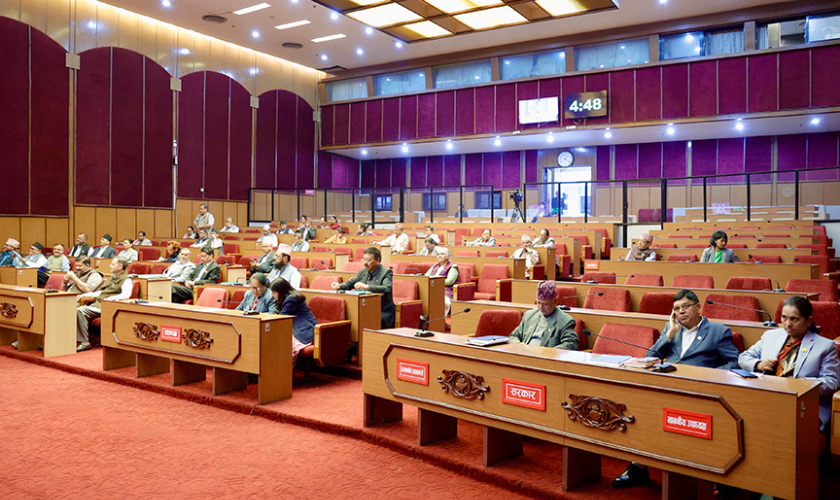The introduction of a 'take-and-pay' modality in the power purchase agreement (PPA) through the budget for the upcoming fiscal year (FY 2025/26) has drawn strong criticism from independent power producers, who warn that it could derail hydropower investment and development in Nepal.
About two months ago, a board member of the Nepal Electricity Authority (NEA) informally sought the opinion of Prakash Chandra Dulal, Deputy General Secretary of the Independent Power Producers’ Association Nepal (IPPAN), regarding the possibility of signing PPAs for run-of-river (RoR) hydropower projects under the take-and-pay model. Under this model, the NEA is not obligated to buy electricity if it is not required, unlike the existing take-or-pay arrangement, which requires payment for all generated power regardless of demand.
According to Dulal, the board member had floated the idea as a way to discourage RoR projects and promote peaking run-of-river (PRoR) and storage-type hydropower developments. “I sensed they were informally testing the waters,” Dulal said. “I made it clear that such a provision would jeopardize investments made in RoR projects.”
Despite these concerns, the government announced in its budget that future PPAs with RoR projects would be conducted on a take-and-pay basis. This has triggered strong protests from private sector power producers, who argue that the new policy will stall about 300 RoR projects with a combined capacity of 17,000 megawatts and put at risk investments worth an estimated Rs 66.22 billion (approx. USD 500 million).
Read also: FM Paudel in the Hot Seat as 'Take-and-Pay' Sparks Uproar in Power Sector
As the backlash intensifies against the ‘take-and-pay’ power-purchasing provision introduced in the latest budget, Finance Minister Bishnu Paudel has stepped forward to defend the policy. Meanwhile, Energy Minister Deepak Khadka has distanced himself from the deepening conflict, saying that it was not endorsed by his ministry and that he personally opposes it.
The Independent Power Producers’ Association Nepal (IPPAN), which represents private hydropower developers, has strongly objected to the new policy. On Sunday, June 8, an IPPAN delegation met Minister Paudel at the Ministry of Finance and urged him to rescind the provision, which they argue undermines the viability of ongoing and future projects.
Dulal, who was previously approached about the take-and-pay idea, finds it implausible that top officials are unaware of the provision, especially since the NEA board is chaired by the energy minister himself. “Ministers cannot simply claim ignorance,” he said, hinting that either formal or informal suggestions may have originated within the NEA.
NEA Managing Director Hitendra Dev Shakya, however, denies any involvement in promoting the take-and-pay model. “The Ministry of Finance never sought any recommendations from us before including it in the budget,” he said. “There is no reason for us to be blamed for this.”
Read also: Private Power Producers Warn of Protests and Potential Blackout Over 'Take-and-Pay' PPA Provision
The controversy emerged just as the NEA had opened a window for PPAs totaling 5,000 megawatts. Although Nepal currently produces surplus electricity during the monsoon and exports it to India and Bangladesh, the export market is not guaranteed. India’s annual import approval must be renewed every year, and long-term purchase assurances from neighboring countries remain uncertain.
From the NEA’s perspective, the take-or-pay model creates a financial liability as it requires payments even when the power cannot be sold. However, the private sector argues that without guaranteed purchases, banks are reluctant to finance projects, effectively stalling hydropower development. IPPAN has demanded that the take-and-pay clause be immediately removed from the budget.
In a press statement following their meeting with Minister Paudel, IPPAN claimed the minister insisted that the provision would not obstruct power generation.
Amid this uncertainty, the NEA has sent letters to 51 hydropower projects—already connected to its transmission system—asking them to submit details for PPA processing. But NEA has yet to clarify under which modality—take-or-pay or take-and-pay—these agreements will be signed.
“If the take-and-pay provision stands, then the PPAs will follow that model,” Shakya said. “If the provision is removed, we will implement the decision accordingly.”
Read also: IPPAN Urges Government to Remove ‘Take and Pay’ Provision from Budget












